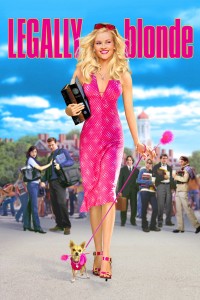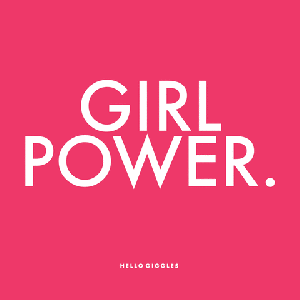By Hannah Cantrell
Introduction:
Female college students embody many amazing things, but those often get lost in popular culture. In 2016, it was estimated that “11.7 million females . . . attend[ed] [college] in fall 2016, compared with 8.8 million males” (National Center for Educational Statistics). As you can see, females are the majority in colleges, but that is not recognized or appreciated in media. For my blog post, I chose to analyze how female college students are portrayed in popular culture, specifically movies. This is something I wanted to analyze because as a female college student myself, the stereotypes negatively affect other females and society in general. Through my research, I have discovered many things about the stereotype of female college students in movies, but most importantly how it has to do with their looks. I also wanted to examine one movie out of the three that could portray a “good-looking” female in a position of power. Overall, I found that female college students portrayed as “good-looking” are shown as less intelligent in films.
Legally Blonde:
Many of us remember seeing Legally Blonde when we were young and how we thought it was a funny, bubbly movie of beauty and success. Essentially (for those of you that don’t know) Legally Blonde is a 2001 movie starring Reese Witherspoon as Elle, a stereotypical blonde, sorority college student who ends up following her ex-boyfriend to Harvard law school. Originally she wanted to go to win him back, but as the movie progresses it is evident that she has the skills to be a better lawyer than him. Along the way, there is a love story written in with Elle and a different law student and the trials and tribulations of her law school journey. To be honest I absolutely loved this movie as a kid and saw it multiple times after it came out. It is a very entertaining movie that keeps you interested in the story line. However, when looking for sources for my blog post, I immediately thought this was a negative portrayal of a female college based off of looks.
Women college students are often stereotyped by how they look rather than by how they are as students. In Legally Blonde this rule is no exception. The “dumb blonde” stereotype is one portrayed often in films by depicting blonde female actresses as “dumb” because they care about how they look, most notably about their blonde hair. For example, Elle is portrayed as a blonde, sorority girl who is obsessed with the color pink and how she looks. This is done to diminish the quality of her intelligence and present her as something other than what she actually is. This is a common theme within many popular culture movies, as they portray women as sexual objects to make their achievements outside of their looks seem so much more astonishing.
A review of the movie called “A Rich Ditz Has Both Brains and the Last Laugh” by A.O. Scott offers a complimentary praise of Legally Blonde, while also offering criticism about certain aspects. He offers admiration for both Reese Witherspoon’s performance and the content of the movie itself. However, he also notes that the movie “mock[s] her ditzy rich-girl cluelessness at one moment and admir[es] her moxie the next” (Scott). I also found this to be true when I was analyzing the content. It seemed like they wanted her to be portrayed as a success story by beating the odds of her stereotype, yet they would juxtapose that by having her do something that insulted her intelligence. For example, in her law school application video, Elle has it filmed in a pool wearing a bikini, automatically accentuating her sexual (not intellectual) appeal. This was just one of the many ways the film portrayed her in a negative light, highlighting her looks rather than her brains. Overall, this review was helpful in presenting positive facts about the movie, while also offering suggestions on how it could be better.
The House Bunny:
Another comedic movie from the 2000’s is The House Bunny made in 2008 starring Anna Faris. The House Bunny is essentially about a Playboy bunny that gets kicked out the mansion the day after her 27th birthday. Unaware of where to go, she stumbles upon an “unpopular” sorority and ends up becoming their “house mother”. The movie has a lot of comedic moments, like having Anna Faris’ character Shelley do ridiculous things such as wearing glasses way too strong in an effort to look “smarter” for her date. However, this also leads to the negative portrayal of female college students in this movie. Sexuality is held in a high regard and intellect is held in a low regard.
Since Shelley is a current, and then former, Playboy bunny in the movie she is stereotypically cast as blonde, tan, and voluptuous. Most of the movie is centered around how she looks, from the sorority respecting her more, to getting attention from all males in the film. Also, the film decided to cast the sorority all as stereotypes that gather negative attention based on how they look. Shelley comes in to transform them and make the girls desirable to men, rather than teach them to be confident with whom they are. The House Bunny takes the idea of a damsel in distress and turns it into a character unable to see whom she really is since she is caught up in trying to impress others.
“‘The House Bunny’ Skimps on Comedy; This Fish (or Bunny) Out-of-Water Tale is Legally Dumb,” by Colin Covert, as you can probably tell by the title, is a negative review of The House Bunny. Covert definitely offers a harsh review of the film as he said in the article, “This film, a custom-crafted star vehicle that Faris developed and co-produced, is a wasteland of humor where sickly jokes go to die. This dumb “Bunny” should have stayed in its hole.” While there was obvious bias in this article, I found it a brutal review that pointed out the stereotypes that make this movie damaging to female college students. What I most importantly took out of the review was that other people are seeing these stereotypes are not happy with them either.
From Straight A’s to XXX:
We all know how expensive college tuition is, right? For one student her tuition was extremely expensive and she found herself in a position with no help to pay for it. The movie From Straight A’s to XXX, tells the real story of Duke college student Miriam Weeks who turned to porn in order to pay for her 60,000 dollars a year tuition. She successfully keeps it a secret until a classmate finds out and soon the entire school knows about her alter ego. Instead of hiding, she decides to take an interview with the school paper and stand up for her decision. I found it refreshing how this movie takes the stand of being neutral and allowing the viewer to decide how they feel about the main character rather than portraying her as weak or vulnerable, versus Legally Blonde and The House Bunny.
What is particularly interesting is that Miriam describes her decision to do porn to the paper as a feminist decision. She says how it is empowering for her to be able to express her sexuality. The movie also brings up her homework and/or classes often to remind the viewer how she is still a student and intelligent. Porn stars are often portrayed in popular culture as self-absorbed and un-intelligent. It is very commendable for this movie to have presented a view that did not thrash the main character because it could have been easy for them to do so given the context. Instead, it allows us to keep open minds and truly understand why Miriam decided to become a porn star, and how it ultimately benefitted her.
“Lifetime’s ‘Duke student porn star’ Movie is a Scathing Commentary on College Tuition Costs” by Emily Yahr is a complimentary review of From Straight A’s to XXX. The purpose of this article is to analyze and articulate how the movie will portray Miriam in a position of power. It is also about a woman who made a choice for herself. The article focuses heavily on the cost of college tuition, making the piece less about a porn star and more about how difficult it is to pay for college. As someone who is currently dealing with that reality, one can better understand why Miriam made the decision to become a porn star. She is a woman who wants to be educated and found a way to do so that does not interfere with going to class or being able to study.
Conclusion:
Popular culture and specifically film, have cast female college students in a negative light, focusing on their looks rather than intellect. Legally Blonde and The House Bunny are examples of how female college students are portrayed by how they look rather than how they are as students. However, From Straight A’s to XXX portrays a female college student who is in the sex industry but is confident in who she is. On the other hand, overall female college students are shown as “popular” based on being good looking and are portrayed as less good looking when playing “smart” characters. As you can see from my analysis, this is prevalent in many movies in the twenty-first century. As a female college student myself, I see this stereotype prevalent in real life too. As females are now the majority of students in college, I think it is time for popular culture to start to accurately represent them in popular culture.
Learning Moments:
Honestly, I was most intrigued this term by learning what labels my classmates identified themselves with. I found it was very interesting to see the labels other people embody and how that affects their perceptions of themselves. It also made me think about what labels I attach to myself and how some of those are positive and some are not. We definitely label ourselves by what society sees us as, maybe a daughter or girlfriend, rather than a creator or an intellectual. It made me wonder what labels other people would say I am, versus what I categorize myself as. I found this exercise and the eventual Big Picture Blog post to be an important step in realizing what stereotypes there are about someone like me out in the world, and how I can choose to break out of those.
Sources:
Covert, Colin.”‘The House Bunny’ skimps on comedy.” Star Tribune. Star Tribune, 21 Aug. 2008. Web. 26 Feb. 2017.
“Fast Facts.” Fast Facts. National Center for Education Statistics, 2016. Web. 24 Feb. 2017.
From Straight A’s to XXX. Dir. Vanessa Parise. Perf. Haley Pullos. Sepia Films, 2017.
Legally Blonde. Dir. Robert Luketic. Prod. Marc Platt and Ric Kidney. Perf. Reese Witherspoon. MGM Home Entertainment, 2001.
Scott, A. O. “A Rich Ditz Has Both Brains and the Last Laugh.” The New York Times. The New York Times, 12 July 2001. Web. 26 Feb. 2017.
The House Bunny. Dir. Fred Wolf. Prod. Adam Sandler, Jack Giarraputo, Allen Covert, Heather Parry, Karen McCullah Lutz, Kirsten Smith, and Anna Faris. By Karen McCullah Lutz and Kirsten Smith. Perf. Anna Faris, Colin Hanks, and Emma Stone. Columbia Pictures, 2008.
Yahr, Emily. “Lifetime’s ‘Duke student porn star’ movie is a scathing commentary on college tuition costs.” The Washington Post. WP Company, 10 Feb. 2017. Web. 26 Feb. 2017.






You must be logged in to post a comment.